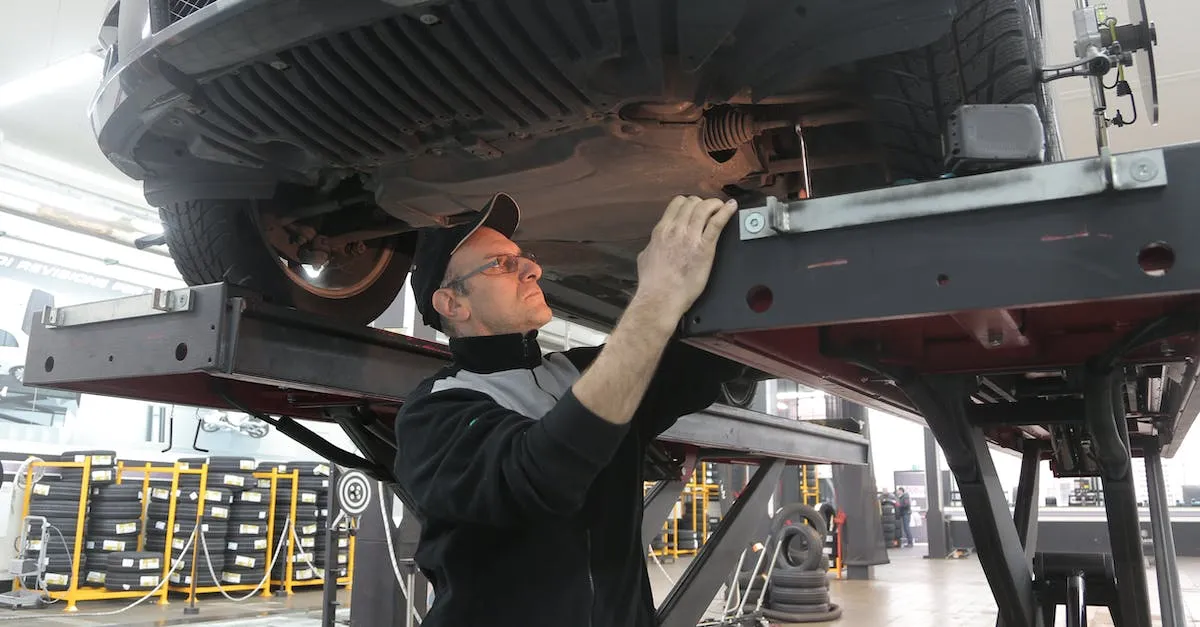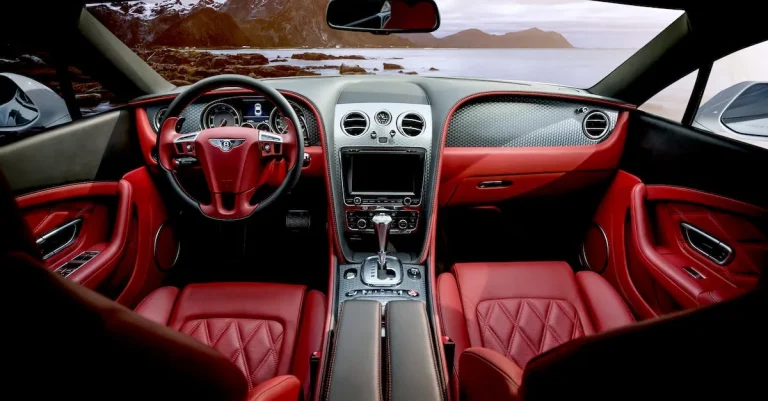What Fails A Car Inspection In Texas: A Comprehensive Guide
Buying a used car in Texas? Worried that it might not pass the state inspection? You’re not alone. Passing the annual safety inspection is required if you want to legally drive your vehicle in Texas. Knowing what inspectors look for can help you avoid failing the test and having to pay for repairs.
If you’re short on time, here’s a quick answer to your question: Faulty brakes, suspension, tires, lights, emissions controls, and windshield wipers are some of the most common reasons vehicles fail the Texas safety inspection.
In this comprehensive 3000+ word guide, we will cover everything you need to know about the Texas vehicle inspection requirements. You’ll learn about the items inspected, costs, how to prepare, exceptions, out-of-state vehicles, and what happens if your car fails. We’ve also included tips from mechanics on easy fixes to help your car sail through the test.
What is Inspected During the Texas Vehicle Safety Inspection?
When it comes to getting your car inspected in Texas, there are several key components that are thoroughly checked to ensure the safety and roadworthiness of your vehicle. The Texas Vehicle Safety Inspection covers a range of areas, including lights, windshield wipers and washers, steering, suspension, brakes, tires, seat belts, emissions controls, horn, and mirrors.
Lights
During the inspection, the condition and functionality of all lights on your vehicle will be examined. This includes headlights, taillights, turn signals, brake lights, and license plate lights. Any bulbs that are burnt out or cracked will need to be replaced before your car can pass the inspection.
It’s always a good idea to do a quick check of your lights before taking your car in for inspection, as it can save you time and potentially costly repairs.
Windshield Wipers and Washers
Having properly functioning windshield wipers and washers is crucial for maintaining clear visibility while driving. During the inspection, the condition of your wiper blades will be assessed, and the washer fluid reservoir will be checked to ensure it is full.
If your wiper blades are worn or torn, they will need to be replaced to pass the inspection.
Steering
The steering system of your vehicle is important for safe and controlled driving. During the inspection, the steering wheel, column, and linkage will be examined for any excessive play or looseness. If any issues are found, it may be necessary to have your steering system repaired or adjusted before your car can pass the inspection.
Suspension
The suspension system plays a crucial role in providing a smooth and stable ride. During the inspection, the suspension components, including shocks, struts, and springs, will be checked for any signs of wear or damage.
Any worn or damaged suspension parts will need to be replaced to ensure the safety of your vehicle.
Brakes
The braking system is one of the most important safety features of your car. During the inspection, the condition of your brake pads, rotors, calipers, and brake lines will be assessed. The inspector will also check for proper brake pedal feel and brake fluid level.
If any issues are found, it will be necessary to have your brakes repaired or replaced before your car can pass the inspection.
Tires
Having properly maintained and inflated tires is essential for safe driving. During the inspection, the tread depth, tire pressure, and overall condition of your tires will be assessed. If your tires are bald, have uneven wear, or are damaged, they will need to be replaced before your car can pass the inspection.
It’s always a good idea to regularly check your tire pressure and tread depth to ensure your tires are in good condition.
Seat Belts
Seat belts are a crucial safety feature that helps protect you and your passengers in the event of a collision. During the inspection, the condition and functionality of your seat belts will be checked.
This includes checking for any cuts, fraying, or damage to the belts, as well as ensuring that the buckles and latches are in proper working order. If any issues are found, it may be necessary to have your seat belts repaired or replaced.
Emissions Controls
As part of the inspection, the emissions controls of your vehicle will be assessed to ensure compliance with Texas’ environmental regulations. This includes checking the exhaust system, catalytic converter, and emissions control devices.
If any issues are found, it will be necessary to have your emissions controls repaired or replaced to pass the inspection.
Horn
The horn is an important safety feature that allows you to alert other drivers of your presence. During the inspection, the functionality of your horn will be tested. If your horn is not working properly, it will need to be repaired or replaced before your car can pass the inspection.
Mirrors
Having properly functioning mirrors is essential for safe driving. During the inspection, the condition and functionality of your mirrors will be checked. This includes checking for any cracks or damage to the mirrors, as well as ensuring that they can be adjusted properly.
If any issues are found, it may be necessary to have your mirrors repaired or replaced.
How Much Does a Texas Car Inspection Cost?
Getting a car inspection is an important step for vehicle owners in Texas. It ensures that their vehicles meet the safety and emission standards set by the state. One of the factors that people often consider before getting their car inspected is the cost.
The cost of a Texas car inspection can vary depending on several factors.
Standard Inspection Cost
The standard cost for a car inspection in Texas is $7. This is the fee set by the Texas Department of Public Safety (DPS) and applies to most vehicles. It is important to note that this fee is subject to change, so it is always a good idea to check with your local inspection station for the most up-to-date information.
Additional Costs
While the standard inspection fee is $7, there may be additional costs depending on the services provided by the inspection station. For example, some inspection stations offer additional services such as emissions testing or safety checks for an extra fee.
These additional costs can vary and it is important to inquire about them beforehand.
Discounts and Special Offers
It’s worth noting that some inspection stations may offer discounts or special offers. These can include discounted rates for certain groups, such as military personnel or senior citizens. Additionally, some stations may offer promotions or coupons that can help reduce the overall cost of the inspection.
Checking with different inspection stations and asking about any available discounts or special offers can potentially save you some money.
Comparison Shopping
If you’re looking to get the best deal on a car inspection in Texas, it’s a good idea to do some comparison shopping. Prices can vary between inspection stations, so it’s worth calling around and asking for quotes.
Keep in mind that while price is important, it’s also crucial to choose a reputable inspection station that follows all the necessary guidelines and has certified inspectors.
How to Prepare Your Vehicle for a Texas Inspection
Check All Lights
One of the first things you should do to prepare your vehicle for a Texas inspection is to check all of its lights. This includes the headlights, taillights, brake lights, turn signals, and license plate lights. Make sure that all bulbs are working properly and replace any that are burnt out.
Proper lighting is not only essential for your safety on the road, but it is also a requirement for passing a car inspection in Texas.
Inspect Windshield Wipers and Washers
Another important component to check before your Texas inspection is your vehicle’s windshield wipers and washers. Ensure that the wipers are in good condition and effectively clear the windshield. Also, make sure that the washer fluid reservoir is filled, as you may be asked to demonstrate the functionality of the washer system during the inspection.
Evaluate Suspension and Steering Components
The suspension and steering components of your vehicle play a crucial role in its overall safety and performance. It is important to have these components checked by a qualified mechanic before the inspection.
They will ensure that everything is in proper working order and that there are no issues that could cause your vehicle to fail the inspection.
Examine Brake System
The brake system is one of the most critical safety features of your vehicle. Before taking your car for a Texas inspection, have the brake pads, rotors, and calipers inspected by a professional. They will ensure that everything is in good condition and that your brakes are capable of stopping your vehicle effectively.
Check Tire Tread Depth
Tire tread depth is an important factor in maintaining traction and stability on the road. In Texas, the minimum legal tread depth requirement is 2/32 of an inch. Use a tread depth gauge or the “penny test” to check the depth of your tires.
If the tread depth is below the legal limit, it is time to replace your tires before the inspection.
Confirm Seat Belts are Functional
Seat belts are a crucial safety feature in any vehicle. Before your Texas inspection, make sure that all seat belts are functional and properly secure. Check for any fraying or damage and ensure that they retract properly when not in use.
Check Emissions System
In Texas, vehicles are subject to emissions testing as part of the inspection process. Ensure that your vehicle’s emissions system is in good working order. This includes checking for any warning lights on the dashboard, as well as having the exhaust system inspected for leaks or malfunctions.
Test Horn and Mirrors
The horn and mirrors are often overlooked during vehicle inspections, but they are important for your safety on the road. Make sure that your horn is loud and functioning properly. Additionally, check that all mirrors are intact and properly adjusted for optimal visibility.
Are Any Vehicles Exempt from the Texas Vehicle Inspection?
While the state of Texas requires most vehicles to undergo regular inspections, there are certain exemptions in place. These exemptions are granted based on specific criteria outlined by the Texas Department of Public Safety (DPS).
It is important for vehicle owners to understand these exemptions to ensure they are compliant with the law.
1. New Vehicles
One category of vehicles that is exempt from the Texas vehicle inspection is new vehicles. According to the DPS, new vehicles are exempt from inspection for the first two years from the date of purchase.
This exemption allows owners of new vehicles to drive without the need for annual inspections during this initial period.
2. Historic Vehicles
Historic vehicles, which are defined as vehicles that are at least 25 years old and have been maintained in a manner that accurately represents their original design and appearance, are also exempt from the Texas vehicle inspection.
This exemption recognizes the historical significance of these vehicles and allows their owners to enjoy them without the burden of annual inspections.
3. Electric Vehicles
Electric vehicles (EVs) are also exempt from the Texas vehicle inspection. This exemption is based on the fact that EVs have different emissions standards compared to traditional gasoline-powered vehicles.
Since EVs do not emit tailpipe emissions, they are not subject to the same inspection requirements.
It is important to note that while these vehicles are exempt from the annual inspection requirement, they may still need to undergo inspections for other purposes, such as transferring ownership or renewing registration.
For more detailed information on vehicle inspection exemptions in Texas, it is recommended to visit the official website of the Texas Department of Public Safety at https://www.dps.texas.gov/rsd/vi/.
What Happens if an Out-of-State Vehicle Fails Inspection in Texas?
Bringing an out-of-state vehicle to Texas can be an exciting adventure, but it’s important to understand the state’s inspection requirements. If your vehicle fails inspection in Texas, there are a few things you should know.
1. Understanding Texas Inspection Requirements
In Texas, vehicles are required to undergo an annual safety inspection to ensure they meet the state’s safety standards. This includes checking the vehicle’s brakes, tires, lights, emissions, and other essential components.
If your out-of-state vehicle fails to meet these requirements, it will need to be repaired and re-inspected before it can legally be driven on Texas roads.
2. Temporary Waivers
If your out-of-state vehicle fails inspection and you are unable to repair it immediately, you may be eligible for a temporary waiver. This waiver allows you to legally drive your vehicle for a limited period, usually 30 days, while you make the necessary repairs.
However, it’s important to note that this waiver is not guaranteed, and you will need to apply for it through the Texas Department of Public Safety.
3. Out-of-State Exemptions
While Texas has strict inspection requirements, there are a few exemptions for out-of-state vehicles. If your vehicle is registered in a state that does not require inspections or has less stringent requirements than Texas, you may be exempt from the inspection process.
However, it’s important to check with the Texas Department of Public Safety to ensure you meet the necessary criteria for exemption.
4. Consequences of Non-Compliance
If your out-of-state vehicle fails inspection in Texas and you do not take the necessary steps to rectify the issue, there can be consequences. Driving a vehicle without a valid inspection sticker can result in fines, penalties, and even the impoundment of your vehicle.
It’s essential to comply with Texas inspection requirements to avoid these potential consequences.
5. Tips for Passing Inspection
If you’re planning to bring an out-of-state vehicle to Texas, it’s a good idea to familiarize yourself with the state’s inspection requirements beforehand. This can help you identify any potential issues and address them before your vehicle undergoes inspection.
Additionally, regular maintenance and keeping your vehicle in good condition can increase the likelihood of passing inspection.
For more information on Texas vehicle inspections and out-of-state requirements, visit the official Texas Department of Public Safety website at https://www.dps.texas.gov/rsd/vi/.
What to Do If Your Car Fails the Texas Inspection
Get a Written Report on Why It Failed
If your car fails the Texas inspection, the first step you should take is to request a written report from the inspection center detailing the reasons for the failure. This report will provide you with valuable information about the specific areas of your vehicle that need attention.
By understanding the specific issues, you can prioritize the necessary repairs to ensure your car passes the inspection next time.
Ask the Mechanic for Recommendations
Once you have the written report in hand, it’s essential to consult with a qualified mechanic to get their professional opinion on the necessary repairs. A skilled mechanic will be able to assess the severity of the issues and provide you with recommendations on how to address them effectively.
They may suggest specific parts or repairs that will bring your car up to the required standards.
Prioritize Critical Safety Repairs
When your car fails the inspection, it’s crucial to focus on repairing any critical safety issues first. These repairs may include faulty brakes, worn-out tires, or malfunctioning lights. Prioritizing these repairs not only ensures your safety on the road but also increases the chances of passing the re-inspection.
Neglecting critical safety repairs can lead to accidents or even legal consequences.
Consider Quick Fixes to Pass Re-Inspection
In some cases, there may be quick fixes that can help your car pass the re-inspection. For example, if your vehicle failed due to a malfunctioning check engine light, you could try resetting the codes by disconnecting the battery for a few minutes.
However, it’s important to note that quick fixes are temporary solutions and may not address the underlying issues. It’s always best to consult with a professional mechanic for a long-term fix.
Shop Around for Repairs
After identifying the necessary repairs, it’s a good idea to shop around for the best prices and services. Get quotes from different repair shops and compare their expertise and customer reviews. Remember, going for the cheapest option may not always be the best decision.
Look for reputable mechanics who specialize in the specific repairs required for your vehicle. Websites like AAA.com or BBB.org can provide you with information about accredited repair shops in your area.
By following these steps, you can effectively address the issues that caused your car to fail the Texas inspection. Remember, it’s crucial to prioritize safety and consult with professionals to ensure your vehicle meets all the necessary requirements.
Conclusion
Getting your vehicle to pass the mandatory annual Texas safety inspection doesn’t have to be a painful or expensive ordeal if you know what to expect. Focus on critical components like brakes, tires, and lights. Consider doing some easy repairs yourself. And shop around if significant work is needed.
With this comprehensive guide, you now have the key facts about the Texas inspection process. A little preparation and preventative maintenance will go a long way toward sailing through the test. Before you know it, you’ll have that coveted inspection sticker on your windshield until next year.








